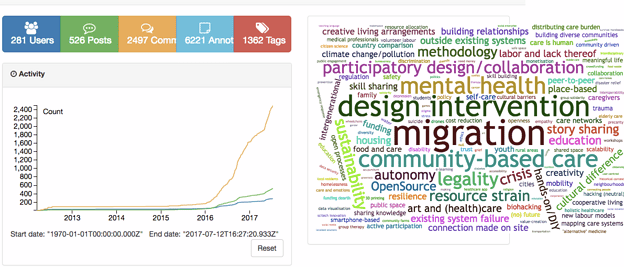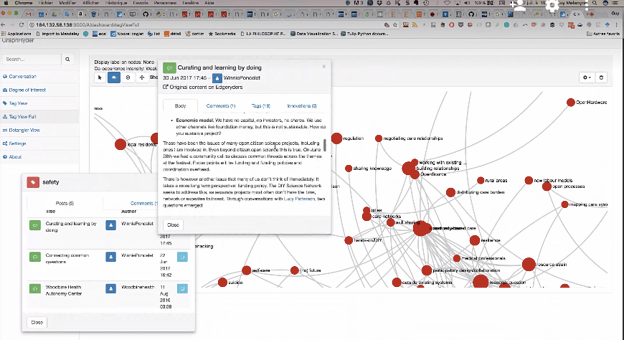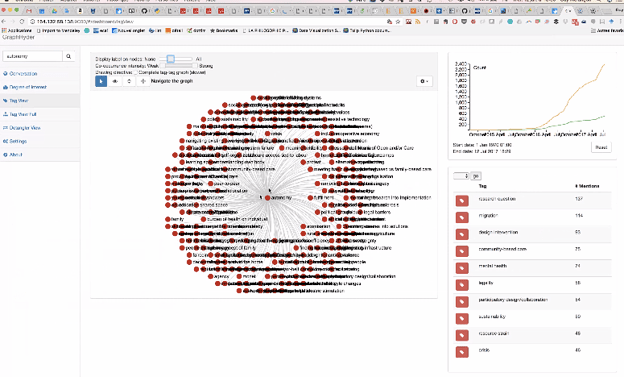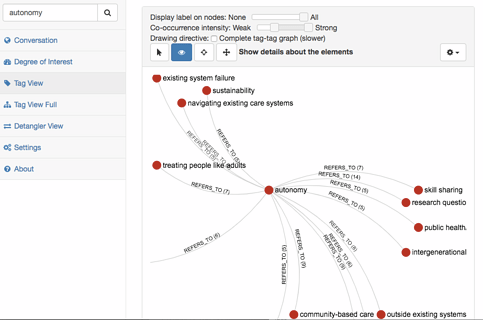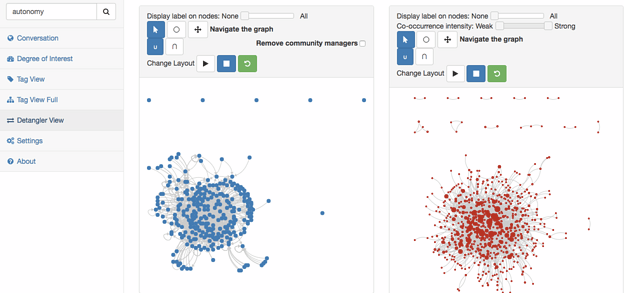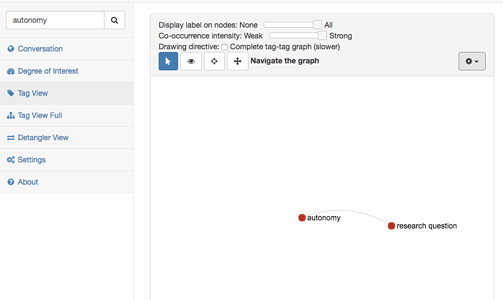Community Call 12/7: Play date with GraphRyder!
A one hour online demo and interactive event where participants learn to read the opencare community network graph!
- What do participants mean when they talk about care?
- Which aspect of care are you are interested in? See who (else) is talking about it and in which context
- Discover co-occurences of care concepts: i.e. which care concepts are associated with migrant care, or care regulations in our conversation.
GraphRyder is opensource, web based, and meant to be a resource for network scientists, researchers, community managers and citizens at large - graphryder.opencare.cc
Our goal for this first session is to help people get familiar with it. Anyone interested can come, learn how to navigate graphically and conceptually our community database, and ask questions. We hope to get useful feedback on the tool to help us adjust the views that need improvements.
Who is leading?
Guy Melancon is a professor and researcher at University of Bordeaux and the uni computer science research lab (LaBRI). A mathematician and expert in network visualizations, with a knack for interdisciplinary collaboration and learning events (Masters of Networks), Guy is leading the team building GraphRyder as a compelling interface for open care community data.
I get involved as much as I can in tech and intellectual transfer action towards the industry. I dream every citizen would be able to handle, mine and visualize open data to defend their cause.
Jason Vallet. works with melancon, bpinaud at the University of Bordeaux to provide expertise in visualization for the opencare conversations.
Amelia Hassoun. A digital and medical anthropologist, and PhD student at Oxford University, Amelia has been coding over. I’m secretly hoping she’ll become Edgeryders in-house ethnographer.
Federico Monaco. Teaching at Universita degli Studi di Parma, Federico is currently opencare’s ethnographer in residence at WeMake makerspace in Milano.
When and where
This Wednesday at 18:00 CEST in the google hangout - click here for direct access (no login required).
You don’t need to prepare ahead of the call, just bring an open mind.
Interested to attend? Press the blue button “Attend” or leave a comment below so we can do a proper head count, thanks!
Date: 2017-07-12 19:00:00 - 2017-07-12 19:00:00, Europe/Brussels Time.
